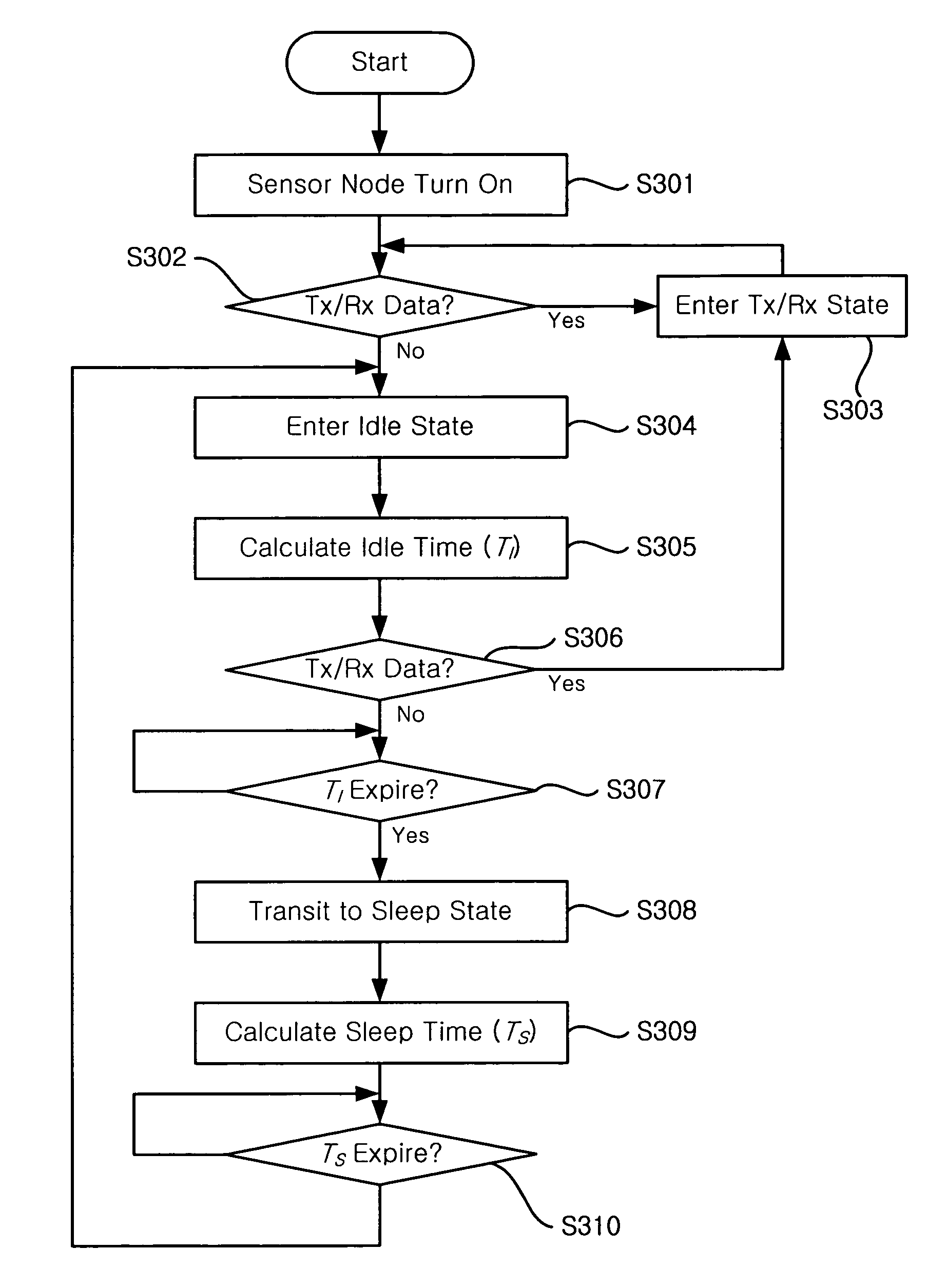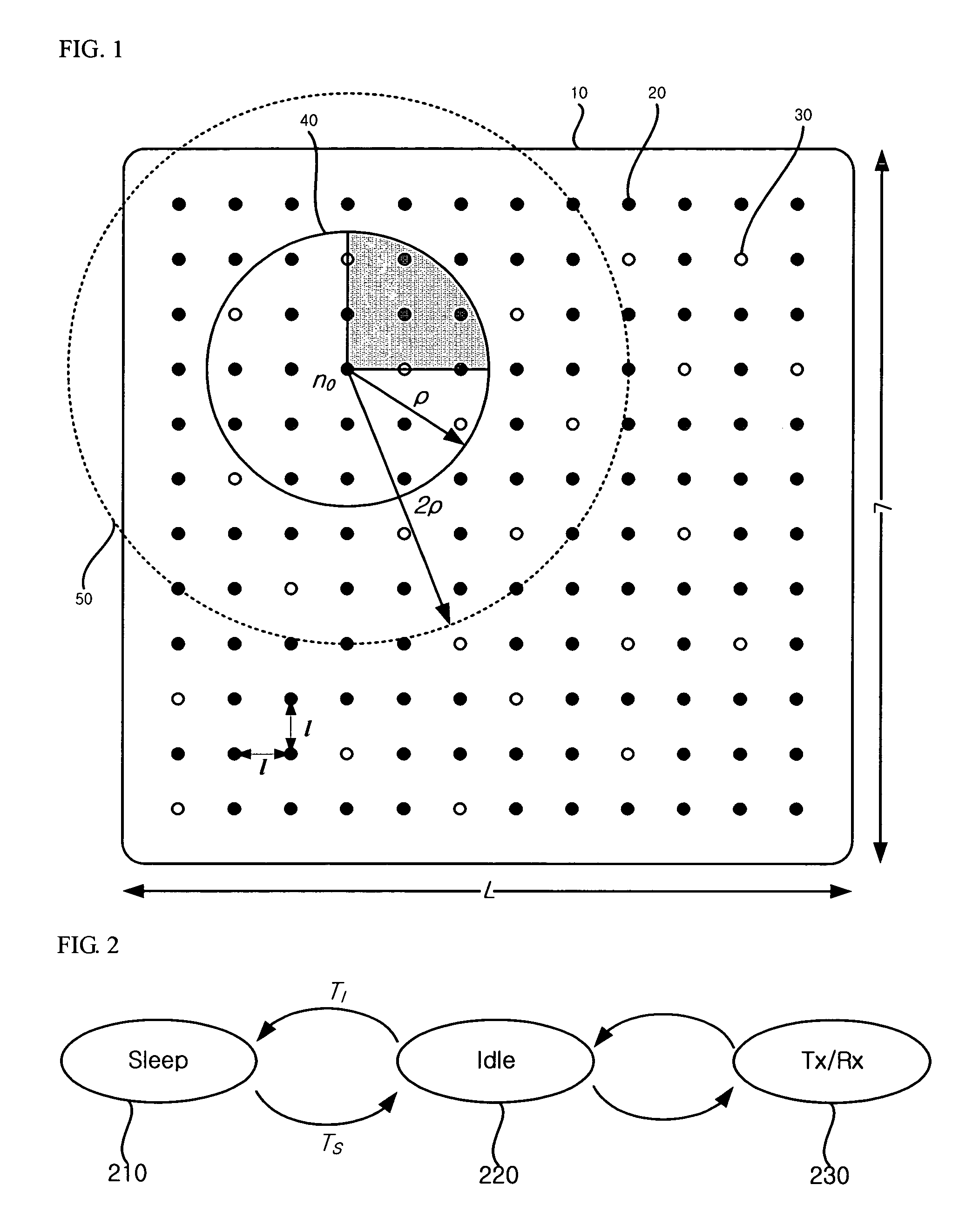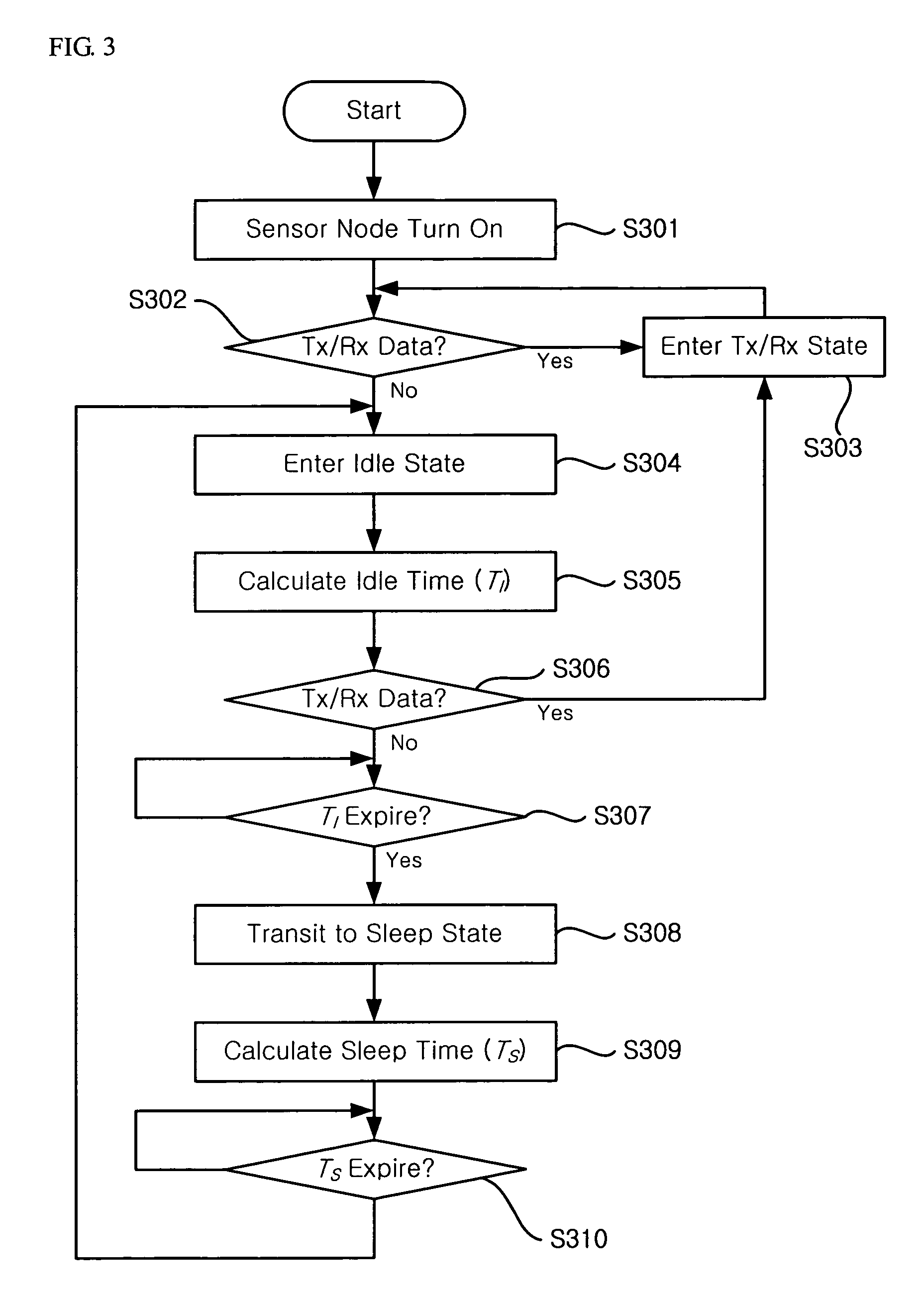Power-saving method for wireless sensor network
a wireless sensor and wireless sensor technology, applied in the field of wireless sensor network, can solve the problems of deteriorating network performance, affecting the operation of nodes, and affecting the performance of the network,
- Summary
- Abstract
- Description
- Claims
- Application Information
AI Technical Summary
Benefits of technology
Problems solved by technology
Method used
Image
Examples
Embodiment Construction
[0021]Preferred embodiments of the present invention will be described in detail hereinafter with reference to the accompanying drawings. In the following description of the present invention, a detailed description of known functions and configurations incorporated herein will be omitted when it may obscure the subject matter of the present invention.
[0022]The Signal-to-Interference ratio (SIR) is the ratio of the power of the wanted signal to the total residue power of the unwanted signals. The inverse of SIR, Interference-to-Signal Ration (ISR) is additive, i.e., the overall ISR is the sum of the ISRs due to all unwanted signals, assuming the unwanted signals are independent of the current transmission and each other. Signal strength or path loss from nodes are highly dependent on physical distance and channel status between nodes.
[0023]FIG. 1 is a schematic view of a wireless sensor network for illustrating a power saving method of the present invention.
[0024]In the present inve...
PUM
 Login to View More
Login to View More Abstract
Description
Claims
Application Information
 Login to View More
Login to View More - R&D
- Intellectual Property
- Life Sciences
- Materials
- Tech Scout
- Unparalleled Data Quality
- Higher Quality Content
- 60% Fewer Hallucinations
Browse by: Latest US Patents, China's latest patents, Technical Efficacy Thesaurus, Application Domain, Technology Topic, Popular Technical Reports.
© 2025 PatSnap. All rights reserved.Legal|Privacy policy|Modern Slavery Act Transparency Statement|Sitemap|About US| Contact US: help@patsnap.com



